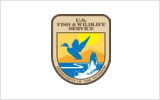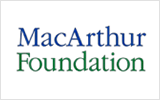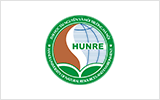The IUCN World Conservation Congress 2016, which has taken place from 1st to 10th of September at Honolulu, Hawaii, focused on the theme “Planet at the Crossroads” in order to reconsider ways of world conservation in the future.
Participating in the Congress has over 10,000 delegates from 190 nations across the world, including leaders from governments, public sectors, non-governmental organizations, authority agents, students, ethnic groups, entrepreneurs and conservationists…
Theme of this year Congress is “Planet at the Crossroads”, which is determined to emphasize that the world is facing many challenges and that we need to take proper immediate actions to improve the degradation of land and water environment, and ecosystems, aiming towards a green planet full of life.
The Congress took place with two sections: Section 1: Conservation Forum, from 1st to 5th of September; and Section 2: Members’ Assembly, from September 6th to September 10th.
This years’ Congress focus priority on conservation, sustainable development and the environment. The six identified principal motions for debate at the Congress are: (i) Protected areas and other areas important for biodiversity in relation to environmentally damaging industrial-scale activities and infrastructure development; (ii) Advancing conservation and sustainable use of biodiversity in areas beyond nationals’ jurisdiction; (iii) Natural Capital; (iv) IUCN policies on biodiversity offsets; (v) Improving standards in eco-tourism and (vi) Mitigating impacts of oil palm expansion and operations on biodiversity.
During Member’s Assembly, the IUCN’s Board of Members has identified the concerns and critical trends in the conservation and the orientation of the work of the Organization for the next four years. Council members also discussed the challenges of conservation and sustainable development of the world’s most pressing. Those most important policies and initiatives for the International Conventions of the World Conservation that have been released in the past 68 years are: the World Heritage Convention, the Ramsar Convention, IUCN Red List of threatened species, the Convention on International Trade of Wild Flora and Fauna Species (CITES) and the Convention of Biological Diversity (CBD).
Attending this year’s Congress, Viet Nam has 21 delegates, including 6 members. Dr. Hoang Van Thang, Director of Centre for Natural Resources and Environmental Studies (CRES) participated in the Congress as a representative of CRES as well as Chairman of the IUCN Vietnam Committee. Reportedly, only accredited members has the right to vote for reports and motions as well as Chairmans of Commisions, Regional Consulars and IUCN President period 2017 – 2020.
After eight plenary sessions, the Congress has adopted the 2017 – 2020 agenda and Subcommittee Programme, Priority Activities, IUCN credential positions which include 28 members of the Council and one Chairman of IUCN Presidency
Through Hawaii Commitment, the Members’ Assembly has once again affirmed current problems and emerging challenges of complex, heterogeneous situation and unstable future. In that context, the need to enhance further cooperation to implement conservation activities and preservation of the environment with adequate stature have been raised to the higher level than ever. This also raised not only the need of a deeper and more broadly global dialogue activities about the relationship between human being and nature but it as well showed the necessity of actions related to public contribution in line with long-terrn, adequately and equitably natural-based solutions
















